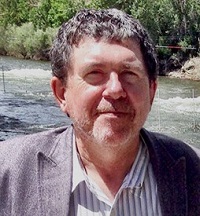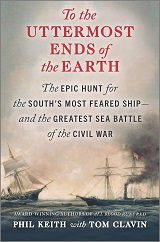When Clavin and Keith were planning and organizing the structure of the book, Keith suggested the idea of each author taking a captain and writing in the point of view of that captain, that ship and their crew, and that side of the war, and when they were done, they would then come together to merge the two parts. Initially, Clavin didn’t think that would work, but eventually decided to give it a try. He took the side of Raphael Semmes of the CSS Alabama , while Keith wrote from the point of view of John Winslow of the USS Kearsage. Clavin explained, “As the reader is reading the book, you’re getting the two different sides. The Kearsage is trying to chase down and sink the Alabama. So as this chase around the world is going on, you’re getting that perspective of each captain, and it’s also, not knowing necessarily, from each author…” When they had completed the story and turned in the manuscript, neither one mentioned to their editor that they had written the book in this way. Their editor’s response was, “You would never know. It fit together seamlessly enough. You would never know that each author was taking each side of the story.”
As far as original source materials, were they used in writing this historical nonfiction? Luckily, Keith and Clavin were able to include actual writings from these two captains of their adventures and experiences that could be drawn upon. Semmes, who had enjoyed writing, had written several books that were published during his lifetime, while John Winslow had written hundreds of letters to his wife over the course of his naval career that had survived. In addition, details from journals of junior officers from both sides were also integrated in the story. “We were fortunate, there’s quite a bit of what’s called contemporaneous sources to draw upon, the actual eye-witness accounts of people who were part of these adventures.”

…I didn’t see myself writing another book about Antietam or writing another book about Chickamauga or Shiloh or some of these more well-known battles. To me, they’d already been covered by very good writers very thoroughly, but when something like this came along that was a unique story about the greatest sea battle of the Civil War… look the only sea battle of the Civil War, so it couldn’t help but be the great[est], but it was a great one.


We must all either wear out or rust out every one of us. My choice is to wear out.

Podcast: Play in new window | Download
Subscribe: RSS

Want to join the discussion?
Feel free to contribute!